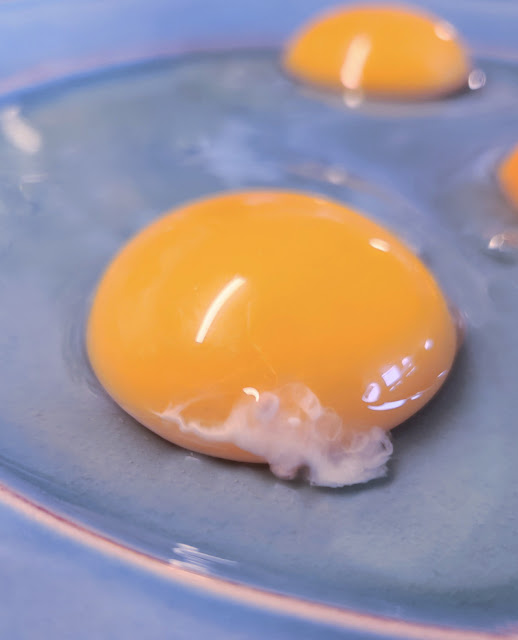Contrary to popular belief, that white stringy thing floating in your egg isn't a baby chick’s umbilical cord. It’s not an embryo, either. It’s actually a sign that the egg is super fresh.
What are These White Stringy Things in my Eggs?
When you crack an egg into a bowl or your frying pan, you might have noticed opaque twisted strands floating in your egg white.
They are called chalaza (plural is chalazae) and are nothing more than protein strands. However, the chalazae (pronounced cuh-LAY-zuh) perform an extremely important function in an egg.
When a hen is laying an egg, the yolk gets encased with the albumen (or egg white). During this roughly 15-minute process, the yolk turns, which causes the protein strands within the egg white to become twisted and form the spring-like coils known as chalazae.
What Do the Chalazae Do?
While they look very unappetizingly like snot, chalazae are a critical component of an egg.
There are two chalazae in each egg. Each rope runs from the yolk membrane to the outer membrane and anchors the yolk within the egg white, keeping it centered from top to bottom in the egg.
One rope runs from the pointy end of the egg to the yolk, while the other runs from the blunt end of the egg to the yolk.
More About the Chalazae
The chalaza that runs from the yolk to the pointy end of the egg is called the clocal chalaza. It is the longer and more sturdy of the two and consists of two protein strands twisted in a counterclockwise direction.
The chalaza that runs from the yolk to the blunt end of the egg is called the infundibular chalaza. It consists of a single strand twisted in a clockwise direction.
Working together, when an egg is laid on its side, the chalazae will turn the yolk so that the germinal disc is always on top.
Because they only anchor the egg top to bottom, but not side to side, it's important to always store your eggs with the pointy end down. This keeps the yolk centered - which is very important if you're hatching eggs, but also important if you're making hard boiled or deviled eggs.
If you store your eggs on their side, the yolk (which is lighter than the white due to its higher fat content) will gradually rise and sit on top of the white, right next to the eggshell.
That doesn't make for pretty deviled eggs, and can actually be detrimental to a hatching embryo as well as the viability of the egg.
Bacteria has a hard time growing in the egg white due to its composition, but will multiply quickly in the nutrient-rich yolk. So it's very important to keep the yolk completely encased within the egg white so it doesn't come in contact with the membrane, air sac or shell which can contain bacteria.
Are Chalazae Edible?
Since they are made entirely of protein, chalazae are edible, but if you wish, you can pick them out with a fork before cooking the egg.
Once the eggs are cooked, the chalazae will likely be unidentifiable, unless you're making a smooth sauce like Hollandaise or a custard or lemon curd, in which case you might want to strain it through a fine mesh strainer when you're done.
How do Chalazae Indicate Freshness?
Because the chalazae break down as an egg ages, the presence of them in an egg indicate that egg is extremely fresh.
Since their main purpose is to anchor the egg yolk in the center of the egg while the embryo is developing, and since eggs hatch in 3 weeks, they would serve no purpose beyond that.
Bottom line, while not aesthetically pleasant to look at, chalazae serve an important purpose and can be ignored or picked out. Your choice.








